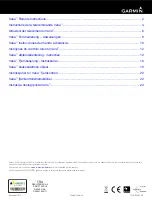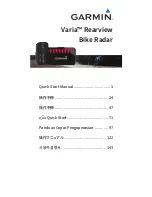
®
p H S e n s o r
PS- 2102
2
Removing the Storage Bottle
1.
Hold the electrode vertically so that the solution
will not spill out of the bottle.
2.
Unscrew and remove bottle. Keep the storage
solution for later use.
3.
Push the bottle cap up the electrode shaft to
keep it out of the way.
Collecting Data
1.
Rinse the electrode with distilled water.
2.
Immerse the end of the electrode in the solution to be mea-
sured. The bulb-shaped glass membrane should be entirely
immersed.
3.
Press or click the start button to begin recording data.
4.
Wait for the reading to stabilize.
5.
Rinse the electrode again before placing it in another solu-
tion.
Calibration
Calibration is not always necessary, especially if you are interest-
ing in measuring a change in pH rather than absolute pH values.
For accurate measurements, first calibrate the sensor. You will
need two different buffer solutions (pH 4 and pH 7 in this exam-
ple) and distilled water. The solutions should be at the same tem-
perature as the solutions that you will measure later.
The calibration procedure varies depending on which software or
datalogger you are using. For more specific instructions, see the
documentation for your software or datalogger.
1.
Open the calibration window or screen. (In DataStudio, click
Setup
; then click
Calibrate Sensors
.)
2.
Select the “2 Point” calibration type.
3.
Rinse the electrode with distilled water.
4.
Place the electrode in pH 4 buffer solution. Wait for the read-
ing to stabilize.
5.
Click or select
Read
for the first calibration point.
6.
Remove the electrode from the solution and rinse it with dis-
tilled water.
7.
Place the electrode in pH 7 buffer solution. Wait for the read-
ing to stabilize.
8.
Click or select
Read
for the second calibration point.
Electrode Maintenance
Electrode Storage
For a storage period of a few weeks or less, rinse the electrode
with distilled water and place it in the storage bottle filled with
storage solution. To make storage solution, combine equal parts 4
M potassium chloride (KCl) and pH 4 buffer solution, with a few
drops of pH buffer preservative (buffer preservative is optional).
You may keep the electrode in the storage solution indefinitely,
but for long term storage, PASCO recommends storing the elec-
trode dry. After dry storage, the electrode must be restored (see
below) to rehydrate the glass membrane.
Restoring the Electrode
Follow this procedure to improve the response of a slow elec-
trode or to rehydrate the membrane after dry storage.
1.
Clean the membrane using one or more of these methods:
•
If the electrode is contaminated with proteins, soak the
electrode in a solution of 1% pepsin in 0.1 Molar hydro-
chloric acid (HCl).
•
If the electrode is contaminated with inorganic deposits,
rinse the electrode with 0.1 M ethylene dinitric
tetra-acidic acid (EDTA) tetrasodium solution.
•
If the electrode is contaminated with oil or grease, wash
the electrode in a mild detergent or solvent known to be
effective for the particular film.
•
If the electrode is not responding quickly, soak the elec-
trode alternately in 12 M NaOH (sodium hydroxide) and
1 M HCl (hydrogen chloride). Leave it in each solution
for one minute. Rinse completely between soakings and
end with HCl.
2.
Soak the electrode in 0.1 M hydrochloric acid (HCl) for 15
minutes.
3.
Soak the electrode in a pH 7 buffer solution for 30 minutes.
If the restoring procedure fails to improve the response of the
electrode, replace the electrode.
Replacement and Alternative Electrodes
•
For a replacement electrode, purchase PASCO part 699-195.
•
A flat-surface electrode, part PS-2182, is also available.
•
The pH Sensor is compatible with other combination pH
electrodes that have BNC connectors.
cap
bottle
Removing
the bottle





















